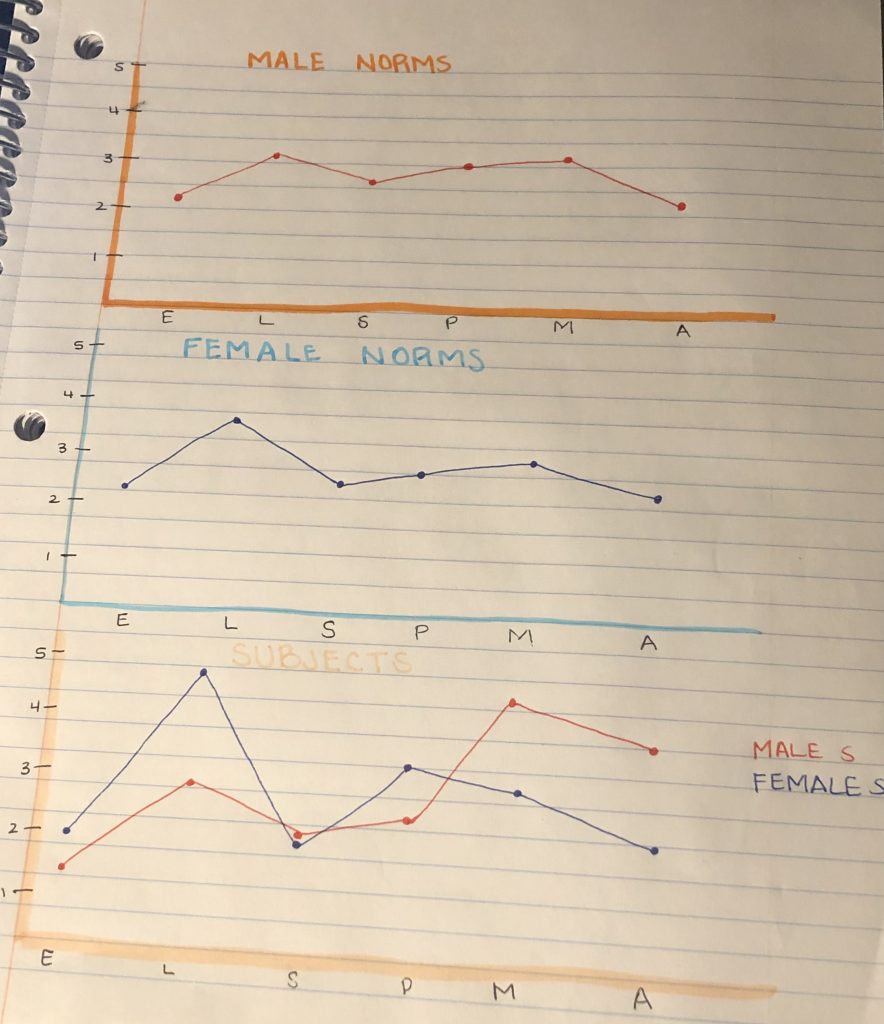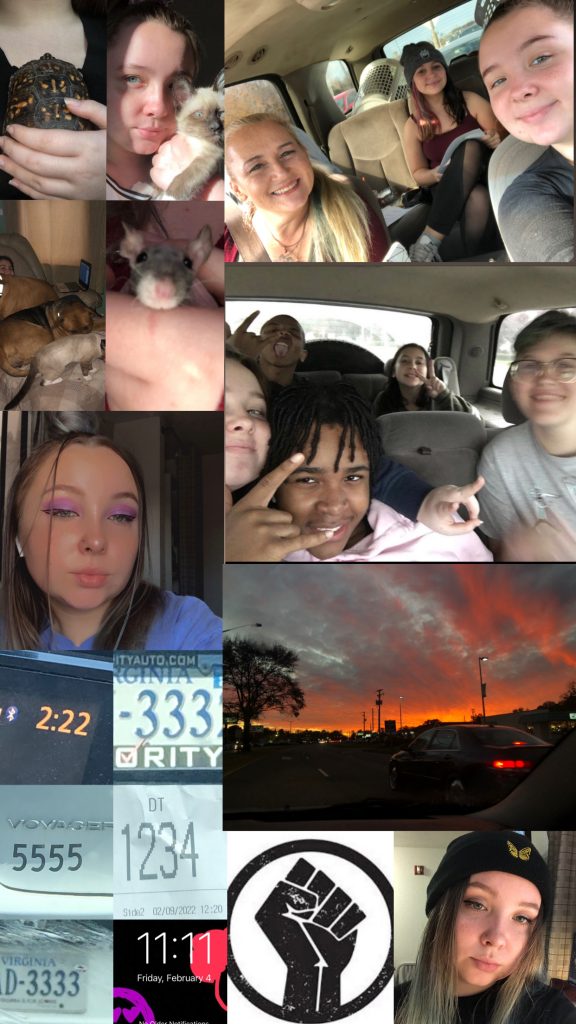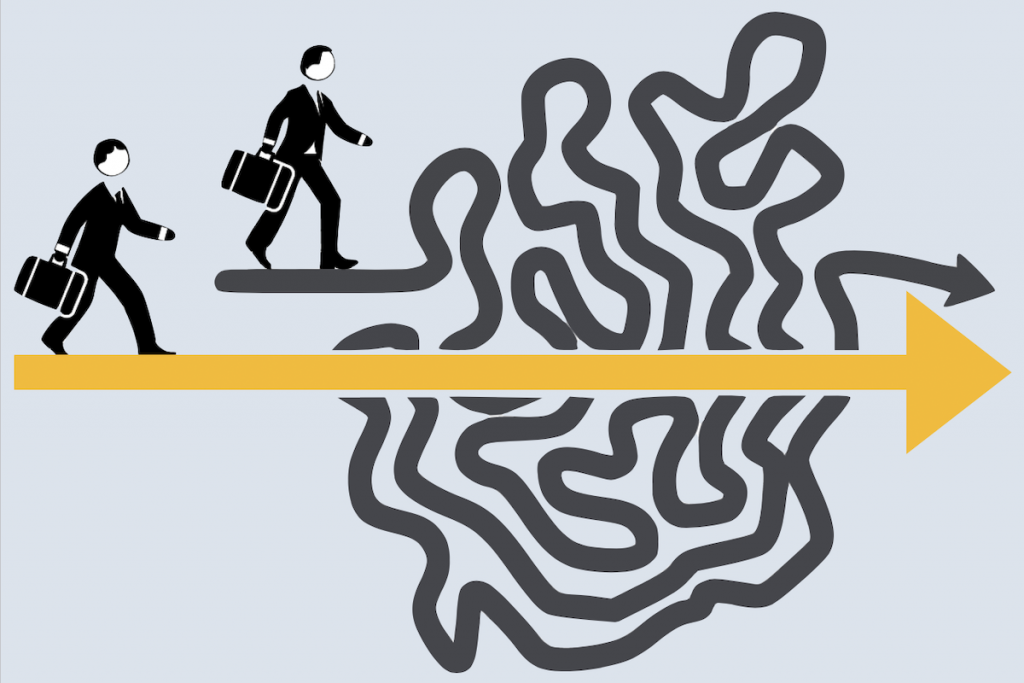ATA4: 3/20/22
I was tasked with doing 5 nice deeds/random acts of kindness over the span of a week. This was what prompted me to think of possible nice deeds, but most of the ones that I did weren’t ones that I had planned, they were spur-of-the-moment type deeds. I did feel good after doing all of these deeds, but I didn’t do them for the satisfaction I would feel from it. I did them to make other people’s lives better and make people smile. I believe in karma and that the good you do will come back to you eventually, so I do think that my life would get better if I enacted a permanent practice of doing more than one good deed a day.
The first deed that I did was for a woman that came into my job with her two young children. She spent a few minutes at each section looking for something and then came over to me. We were slammed with people at the time, but when she came over to me, I could tell she was exhausted and struggling. She asked me if we had any organic blackberries because her kids had been wanting them all day and they didn’t like most other fruits and needed the organic kind. I went to the back to look for them and didn’t see them until I looked into a pallet that hadn’t been taken apart yet. They were halfway down the pallet, which meant I was going to need to take all of the top things off. I decided to spend that extra time taking them off so I could take the woman those blackberries, and her face lit up when I took them out. She was extremely appreciative and told me I made her day so much better because she had to run to 4 different stores to find them. The second deed that I did was for my mom. We have been going through a lot of bad things recently, and it has been weighing on her a lot, so I decided to take her and my sibling out to get food and have a nice, peaceful day. I paid for all of our food and took them to the mall to buy her new craft supplies. She was very appreciative and spent the rest of the afternoon happily making crafts. The third deed I did was for a homeless man; I pass by this same man on my way to and from school all the time, but I normally don’t have any paper bills on me that I can give to help him. One day, I happened to have a $20 bill and decided to give it to him, along with a bottle of water and a small bag of chips that I had in my car (the water was brand new from when I was at home, not one that had been sitting in my car). The fourth deed that I did was for my coworker; he was struggling to bring in a big pallet of produce because a worker from the morning shift left carts and boxes all over the cooler. I went back there and moved all of the carts and helped him put the boxes away and put the pallets in the right spots. He told me thank you and that if I hadn’t come to help him, he would’ve had to spend an extra 30 minutes cleaning up the cooler by himself. The last good deed that I did was more of a collection of smaller deeds that I have already been doing before this assignment; I challenged myself to compliment at least five people each day for the week that we were doing the assignment. I accomplished my goal, and almost all of the people I complimented were appreciative; all but one of the girls I complimented ended up complimenting me back and getting very excited. The few people that didn’t get excited either made weird faces or ignored/didn’t hear me.

I chose this image because it represents how I feel about doing good deeds. This assignment gave me and other students the push to do good deeds, but you should be kind to other people solely because you know it is the right thing to do, not because of what you gain from it. In most of the deeds that I did, I received gratitude and appreciation from the other person, but their reaction was never a factor in whether I did those things or not.
ATA3: 3/6/22
In Assignment 3, we had to discuss and describe our different love styles using a survey about romantic relationships we’ve had/have/want to have. The survey was testing six different elements: eros, ludus, agape, storge, pragma, and mania. I scored below average on eros, storge, and only .1 below in agape, and above average in ludus, pragma, and mania. These scores mean that I value physical attraction, a combination of love and friendship, and all-giving love more than the average woman, and I value rational love planning, symptom-love, and manipulative love less than the average woman.
I personally think that my results are spot-on; I have been in a long-term (over 4 years) relationship with my current partner, so that was the relationship I was thinking of while taking this survey. For some of the questions, I had to think back to before we were together. In my current relationship, we have had a lot of time to grow and evolve together into a more mature, healthy relationship; this is where I agree with the results because, in my relationship, we have a strong physical connection, we started our relationship as friends and it evolved into more, and we are very giving and unconditional in our love. I never planned out who I would date or if I would date my current partner in the ways asked in the survey, such as hereditary aspects. I have never been one to value symptom-love, or love based on the uncertainty of self and the lover; I actually tend to get very anxious and upset when I feel uncertain about the love of myself or my partner. I have never agreed with or taken part in manipulative forms of love, where it is seen as a game with deception; I enjoy being with someone that I don’t have to constantly worry about deceiving or manipulating me or taking advantage of my love. I enjoy security and unconditional love, which I think my results showed very clearly.

I included this image because it contains three graphs of results from the different styles of loves. The first graph (top) represents the norms/averages of the 466 male answers to the surveys. The second graph (middle) represents the norms/averages of the 341 female participants’ answers to the surveys. The last graph (bottom) represents the results of both mine and my boyfriend’s answers to the survey. Our answers, which peak in one or two places, were significantly different from the norms, which peak in one main area or stay relatively stable.
ATA2: 2/13/22
In Assignment 2, we had to find images representative of our self-identity. To do this, I simply went to my social media account -specifically Instagram- and found six different kinds of photos that I post the most. These six kinds of photos are selfies (photos of myself), photos of and with family/friends, photos of my pets, photos of nature, photos relating to activism, and photos of angel numbers.
The selfies show the fact that I tend to seek control of the photos taken and how I look in them. I don’t like most pictures that others take of me, so I tend to be the one taking the photos, even those that I am not the focal point of. Photos of and with my family, friends, and boyfriend show my desire for community and love of those around me. These tend to be the photos I post the most, showing the importance of these people in my life. Photos of my pets show my love and fascination with different types of animals, even those that aren’t deemed as “normal” pets – for example, I have a cat, two dogs, a turtle, a Kenyan Sand Boa (snake), and a rat. Photos of nature show my fascination with the world around me and the way it presents itself in different ways every single day – I take a lot of photos of the sky in particular because it is beautiful and makes me feel connected to not only the Earth but also memories from when I was younger and would spend hours looking at the sky. The photos relating to activism show my desire to help make the world a better place for every being that inhabits it – I focus on issues such as racial, sexual, and gender equality, and climate change. Photos of angel numbers – repeating numbers with different meanings – represent my love for the Universe and the signs sent to me. It also shows my appreciation for repetition and consistency.

I included this collage of photos that I found representing each of the types I talked about above. I have a lot of photos of angel numbers on my social media, which is why they are their own collage inside the large collage. I included two selfies, a photo of the sky that I took and really love, a photo of the Black Lives Matter symbol, a mini collage of my pets, a photo of myself and my friends, and one of myself and my family. I feel that these photos are a very detailed representation of me and the things that are important to me.
ATA1: 1/30/22
In Assignment 1, we had to give examples for each of the four heuristics – representativeness, availability, anchoring and adjustment, and status quo – that were unique. This assignment has helped me to understand heuristics more by making me come up with unique, real-life examples, some of which were personal; these personal definitions will help me to remember each of the heuristics much better than just reading examples offered in the text.
Each of these were real-world examples of the heuristics as we were not allowed to use those offered in the text – I did research more about each of the individual terms to further understand so that I could come up with quality examples, but mine were still uniquely individual. For representativeness heuristics, I used the example of a person that wears dark clothing and heavy jewelry is immediately assumed to be a trouble-making goth person. This leads to many incorrect inferences, as clothing choices don’t determine the quality of the person. For availability heuristics, I used the example of the overestimation of the likelihood of a shark attack; with the extreme media reporting of any and all shark attacks, people tend to think that they happen a lot and are really common. This is not true, as the likelihood of being attacked by a shark in the United States is 1 in 5 million – this heuristic leads to incorrect inferences because people tend to get their perception skewed based on the availability and frequency of the information being presented. For anchoring and adjustment heuristics, I used the example of the labeling of students in schools as low and high-performing students. This labeling affects the performance of students and their ability to reach the expectations that teachers have for them – low or normal performance students may be able to live up to the expectations, while high-performance students will either be seen as high performance just based on their label or they won’t be able to reach those expectations because they are higher based on that label. This has personally happened to me quite a few times from primary through high school when I was labeled as an “honors student”. For status quo heuristics, I used the example of a person working a slightly-above minimum wage job that they hate being offered a higher paying, exciting job that they don’t take because it is less scary and less risky to stay at their current job than to go to the new one. This leads to incorrect inferences because people tend to be scared of change and the effects that come with said change, so they stay in the same place instead.

I chose this image because it shows how the use of heuristics allows us to take less time in our cognitive processing. Heuristics work as shortcuts, which is why the man walking on the yellow arrow – which signifies the heuristic path – is able to get through the brain and cognition faster than the one walking on the squiggly line – which signifies the original, “non-heuristic” path.